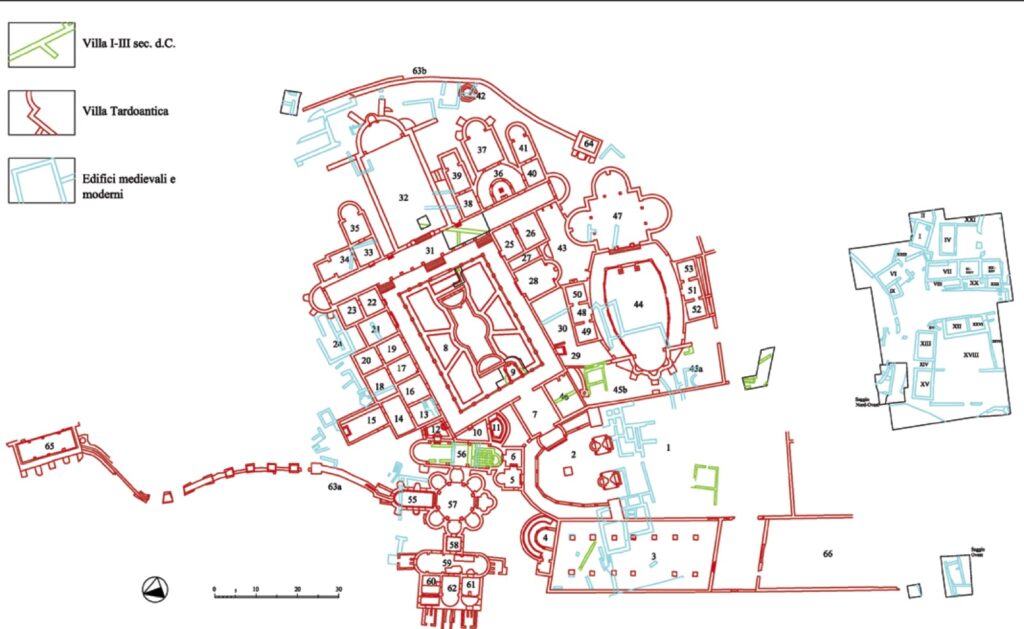The villa rustica was used in the late Republican period (2nd to 1st century BC) as the residence of landowners directly overseeing farming activities.
With the passing of time, in the imperial age and in the late antiquity period (from the 1st to the 4th century AD) the villa rustica took on the connotations of a true domus, in some cases even as a more stable place of reception and residence.
This was due to the increase in the number of slaves available at the time and the incorporation of more land into large latifundia.
At the Villa del Casale, archaeological excavations highlighted a building including a production system and a living area including a thermal bath structure from the 3rd century, found in the layer underneath the mosaic of the biapsidal hall.